Weather and temperature in Largs?
For the 1st week in August in 2024, the maximum daytime temperatures were 17 or 18 degrees; the wet bulk thermometer readings were a shade lower at 13 or 14 degrees. Wet bulb temperature, observations Argyll and Bute from 08/04/2024, 07:00pm | Meteologix.com The wet bulb temperature is what it’s going to feel like with wind chill in wet sailing kit, so you will need to pack some warm kit. The message is ‘bring your layers to Largs’, if we get a heatwave, you might not need them but being cold afloat is not fun. Sometimes a clear sunny day can be the one that catches us all out, as the water from spray evaporates like petrol. That’s where the wet bulb thermometer is a good reference. Whatever the weather when you leave the slipway in the morning, you can guarantee it won’t be the same later in the afternoon. I always take a beanie, and a neck gaiter which are easily stuffed under my buoyancy aid. Once the wind kicks in, they are guaranteed to make you feel warmer in an instant. Also consider an extra layer packed into a 3L dry bag with a chewy bar. Hydration is a big factor while sailing. Its too easy to forget to drink. Remember that fizzy drinks will only make you pee more and will do nothing to hydrate you.
‘Layers for Largs’ check out our Polypro tops, Hot tops and Thermaflex tops to wear underneath your trusty Aquafleece top.
Boat Preparation
Even though Russ is amazing at doing the jobs you hate; repairing and maintaining your boat is part of your sailing apprenticeship. Check your mainsheet and lines for wear. Better to change them now than changing them at the regatta. Check your universal joint for cracks. I am not a fan of those with string in them as they tend to suffer uv damage quicker in my opinion.
Make sure your gloves are not about to wear out and will stand up to six days of hard sailing with 3 races a day, or 4 races a day in the 4.2 fleet!
Have you got a spare watch? They do go wrong when you least want them to. I carry a spare watch on the water in my 3L dry bag – just in case…
Largs Venue Guide
I have raced at Largs with some mixed results. I won the Radial Nationals in 2003 but lost it on a no discard, one race final, in 2006. But I recovered my composure to win the standard rig masters Europeans in 2008. So much of what I write here is from personal experience.
Race Area ![]()
![]()
![]()
Largs offers two main race areas:

One is to the north of the Isle of Cumbrae, which is the principal race area; and the second is between the Isle of Cumbrae and the mainland, which is mostly used in the upper wind range. The course to the north of Cumbae is a long sail in my experience, but it’s worth it. The clearest wind directions are blowing from the south-to-south-west and north-to-north-west. We did race one race South of Cumbrae when the RO was looking for wind. It must have been a westerly. All I can remember was the right-hand side paid. I can’t even place the race area on the map.
North of Cumbrae (The principal race area)
Wind Direction
000 degrees: Go left for the wind, away from the high land mass on the starboard side of the course where you will find an area of divergence - less wind velocity. There will be more breeze to the left-of-middle of the course looking upwind. See my notes on Divergence and Convergence below:
000-040 degrees: With the wind now coming off the mainland at an angle, the left-hand side of the course pays as you go upwind on starboard tack from the starting area. You will start being headed, with lifts on port tack sailing into the shore. Watch out for the lulls in the divergence zone near the shore. I managed to lose the Championships in 2006 when we had a no discard 20 minute last race. Jon Emmett won coming 12th in the last race. We both had 4 firsts to that point in our respective qualifying races, my 25th in the last race was not so good☹ I should have gone left! Apparently they shortened the race as the wind had shifted by 90 degrees. Ahhh! Thankfully we don’t have no discard races much any more.
040-130 degrees: Not a great wind direction for Largs, coming over the hills to the east. With gusts and shifts, you might want to pack your lucky dice. Whichever direction is successful up the first beat may not pay up the next beat. Play the percentage game, keep your eyes peeled and play the shifts.
130-180 degrees: In this direction, left normally pays. There’s convergence of the wind on the port side of the course, and as you go in on starboard tack, you get headed, then lifted back out on port.
180-210 degrees: Another shifty direction, as the wind comes off the Isle of Cumbrae. Looking up wind at the island, there will be more breeze coming along its western (right hand) edge, as this is the convergence side. That means the starboard side of the course should pay for more wind. Always check the position of the first mark relative to the breeze and topography. There might be more wind on the right – but you may have to pass through an area of no wind to get to the mark.
210-270 degrees: With the wind in the south-west sector, it pays to go left for the wind, due to the convergence of wind coming along Cumbrae's western shoreline (more velocity). There is also a header on starboard tack as you go towards the island, with lifts on port tack sailing parallel to the northern shore of Cumbrae. Most of the 2003 Radial Nationals was from this direction. Get a good lane to the left side. If you are a footer (bow down) then you can afford to start towards the pin. If you are a pincher, then perhaps you’ll need to start towards the boat to hold your lane longest.
270-000 degrees: The north-west wind direction is the most stable. But there are still some shifts - 10-15 degrees, gusty and blustery. This is another good time to keep your eyes out of the boat looking for the gusts and lulls, the gusts normally tend to lift starboard tack. I remember the long beat to the start line in 25knots whilst sailing the Laser Standard Masters Europeans.
Tide
During maximum spring tides, the rate can get up to two knots, but don’t worry, you are on neap tides during your week. The main flood stream runs at approximately 010 degrees in the race area north of Cumbrae. While it runs at 350 degrees through the Largs channel, which affects the eastern side of this race course. During neap tides (which is your week) the rate is down to 0.5 knot. An hour before high water the tide eases off, turning slowly over a period of one hour. Then it runs out on a bearing of 190 degrees in the mid-to-western half of the course area, and on a bearing of 170 degrees on the eastern side, down the Largs channel.
Your first day of racing the tides are:
|
Low Tide |
00:23 AM(Sat 02 August) |
1.02 m(3.35 ft) |
|
High Tide |
6:21 AM(Sat 02 August) |
2.53 m(8.3 ft) |
|
Low Tide |
1:02 PM(Sat 02 August) |
0.97 m(3.18 ft) |
|
High Tide |
6:54 PM(Sat 02 August) |
2.4 m(7.87 ft) |
Between the Isle of Cumbrae and the Mainland
I think we sailed one race in the channel during a very windy Masters Europeans. I recall it was a bit crazy as it was coming off Cumbrae. I think it put some of the back of the fleet off from racing anymore as it was horrible. The sail to the northern course is long but the winds are so much steadier.
Apart from that one day, my experience in the channel is limited to one training weekend at Cumbrae, so much of this is supposition.
This race area is normally used in the upper wind range, as a safer option. The clearest wind directions are 340-000 degrees and 180-210 degrees. When from the west, it is very gusty and shifty as the wind comes over the island of Cumbrae. From the east I am told its worse. It is very rare that you will get easterly winds at Largs, with the prevailing winds being out of the western sector. If you do, I doubt very much that the committee would race you in the Largs channel.
Wind Direction
350-010 degrees: Go left for the wind, as it is stronger on the port side of the course with the wind convergence on the left.
010-040 degrees: With the wind coming slightly off the mainland shore, you can expect to get lifts on port tack near the shore. But in gusty conditions don't get too close to the shore, because it will be lighter in there.
040-150 degrees: Shifty
150-200 degrees: On the beat go left for the wind, with convergence on the port side of the course there’s more pressure.
200-240 degrees: I would have thought that the left side looking upwind would give cleaner wind. I am sure that the current will come into play here.
240-350 degrees: In this sector, take the tack that is taking you closest to the mark. If you use a compass, also try to keep your head out of the boat to cut the circles to the mark.
Tide
In the Largs channel, the tide is squeezed through a narrow gap, stronger in the middle and weaker at the edges during both the flood and the ebb. The flood direction is predominately 000 degrees, and the ebb runs at the reciprocal 180 degrees.
Sea Breeze
The prospects of getting a good sea breeze in Largs are relatively poor, as the whole area is land locked. The best chance is when the mainland gets really warm, with no gradient wind component. Then there’s a possibility of the wind filling in from the south-west late morning or early afternoon, veering to the north-west as the day goes on.

Understanding Divergence and Convergence Wind
The basic rule: In the northern hemisphere the wind is lifted with more pressure (on starboard) over the sea and headed (on starboard) over the land (this is due to friction from trees and landmass. When I hear a forecast describing a lifting or heading breeze, I relate that to what I experience on starboard tack.
At Largs, this can make a big difference as you will always be close to one land mass or another. I remember this played a big part in my winning the radial nationals in a westerly breeze when sailing on the northern course. Left towards the island was always a winner for more pressure.
Lastly – Don’t Forget Your Gear
I remember telling myself that the last thing I should do is leave my sailing boots behind. Which was what I did! Don’t worry, if you are like me, Largs Chandlers have everything Rooster 😊




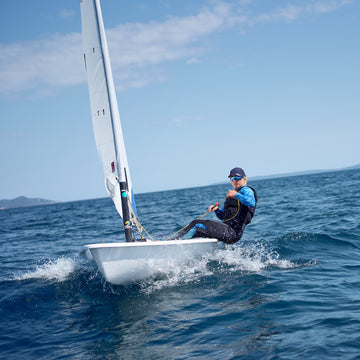
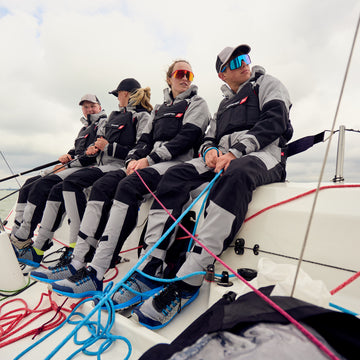
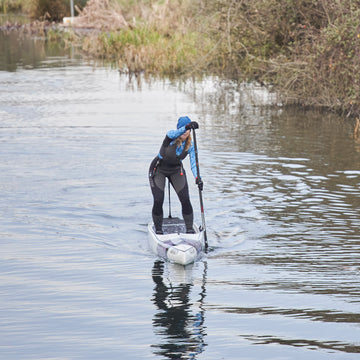
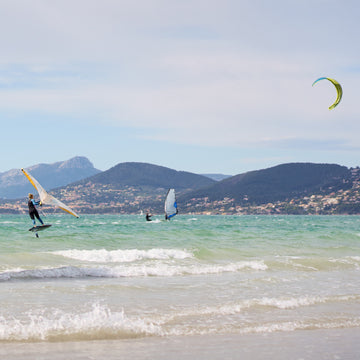
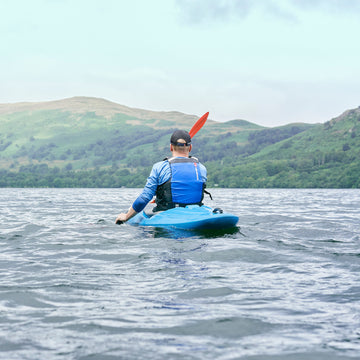
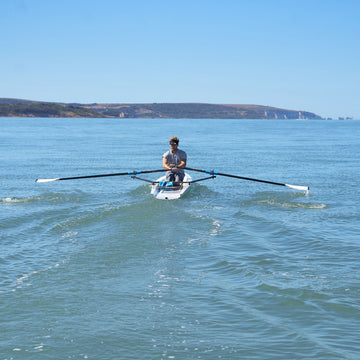
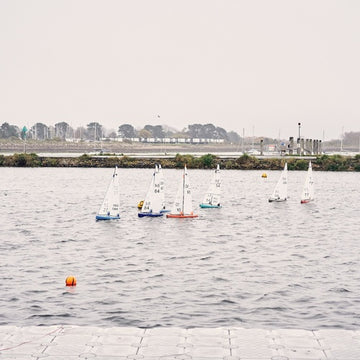












 Select Store
Select Store
 EU
EU
 US
US
